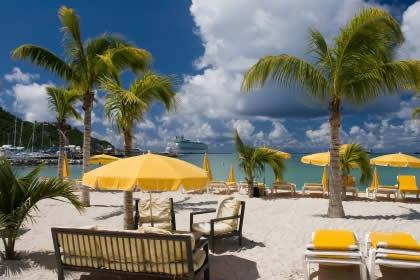Many tourists are content to spend their Vanuatu vacation lazing by the pool of their resort with a cocktail in hand. But if you hope to explore, there are a few transport options worth considering.
Vanuatu’s bus service may seem chaotic to Western tourists. The buses don’t run to any timetable, and there are no regular bus stops! But you’ll find many of these buses in the major tourist areas of Vila, Luganville, eastern Santo, and eastern Malekula.
Look for the vehicles bearing a red letter B near their numberplate, and flag them down as you would a taxi. As there are no set routes, the drivers will happily drive you to any destination on the island.
The taxis in Vila and Luganville look like regular sedans, while in regional areas you’ll find four-wheel drive vehicles marked with a red letter T. The amount charged will depend on the distance you’re traveling, and the condition of the road. To avoid a nasty scare at the end of your journey, you can ask the driver before you set off. Taxis are scarce on Sundays and public holidays, so be prepared to wait longer when traveling on these days.
If you’d prefer to take charge of your travel consider hiring a car or scooter. Cars are available to drivers aged 23 and over, while scooters are available for riders 17 and over. An international drivers license is not required, but drivers must have held a license in their own country for at least one year. The tourist centers of Vila and Luganville have a maximum speed of 50 km/h, but there are no speed limits in rural area. However as many roads are in poor condition, it’s not advisable to go too fast! Cars in Vanuatu travel on the right side of the road, and seatbelts are not compulsory.
